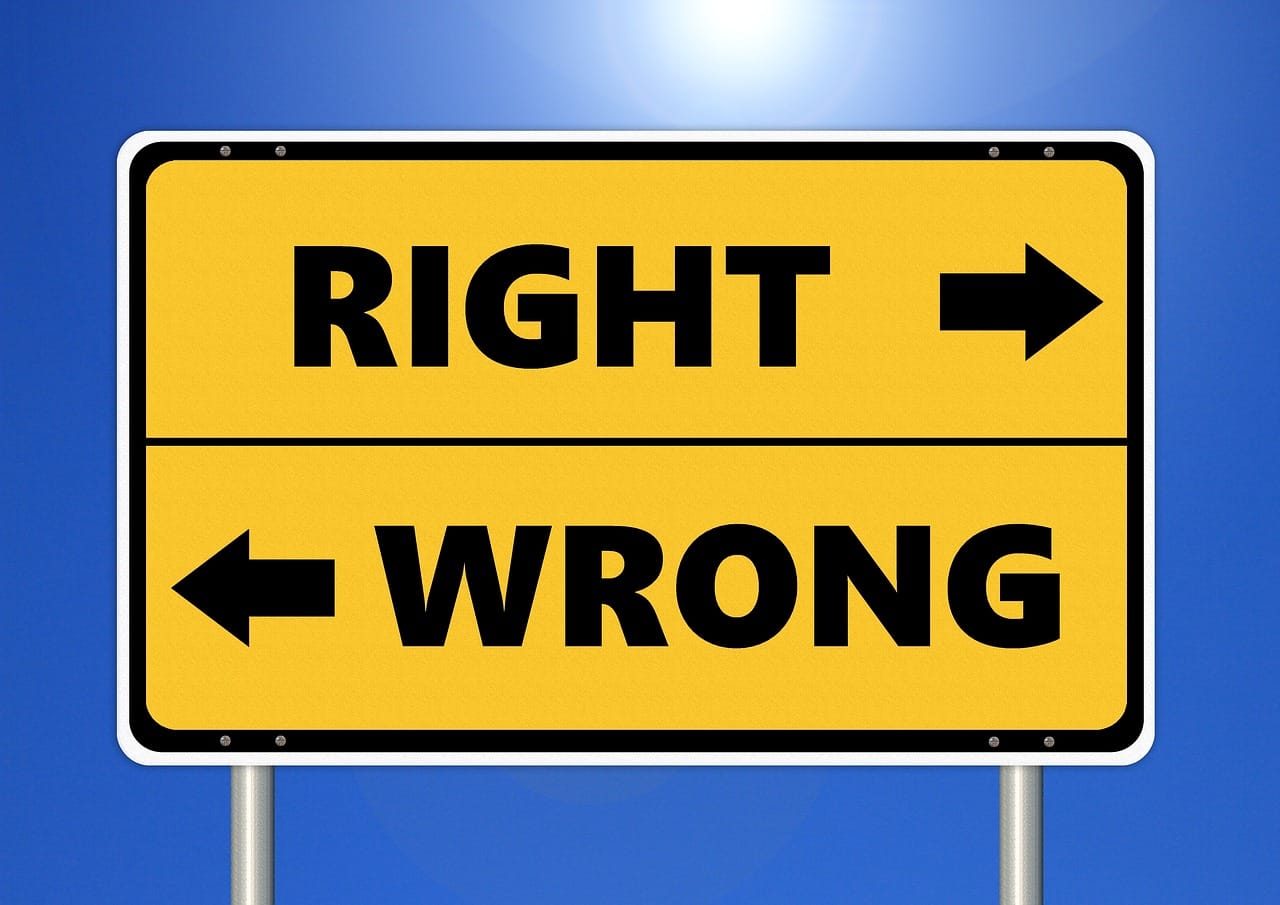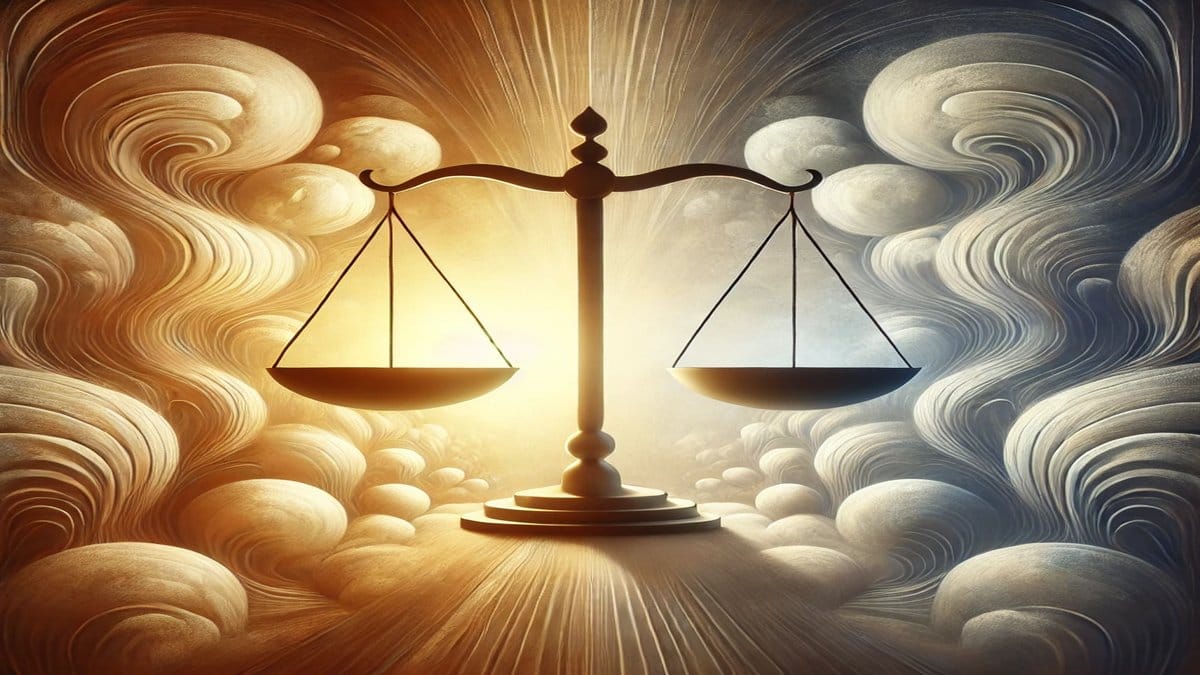In today’s interconnected world, relationships are intricate webs of emotions, perspectives, and moral dilemmas. Whether you’re navigating marriage, starting a new relationship, or resolving conflicts, judging others based on “there is no right or wrong” is crucial. Life’s complexities often defy strict moral classifications, and judging people can lead to misunderstandings, strained relationships, and emotional upheaval.

This blog will uncover the nuances of moral judgments, why actions often cannot be classified as morally correct or incorrect, and how to approach conflicts—especially within relationships—with empathy and understanding.
Why We Shouldn’t Judge People: The Core Argument
1. The Illusion of Universal Morality
Morality is deeply personal and cultural. What one considers morally right might be unacceptable to another, depending on upbringing, environment, and beliefs. For instance:
- In the U.S., individuality is prized, so prioritizing personal goals is often seen as right.
- In India, familial obligations sometimes overshadow individual desires, making sacrifices for the family morally correct.
Actions can appear wrong to outsiders but hold immense meaning within a specific context. Judging people based on our principles erases the importance of cultural and situational nuances.
2. Actions Are Rooted in Circumstances
Life situations often dictate actions that might appear “morally incorrect” from a distance. Imagine a man stealing to feed his family. Is it theft? Yes. Is it wrong? It depends on your perspective.
To illustrate further:
- Case Study 1: During Hurricane Katrina, survivors looted stores for supplies. Legally, this was theft, but morally, they were ensuring survival in dire circumstances.
- Case Study 2: A mother lies to protect her child from harm. Some might call this deceitful, but others view it as love-driven selflessness.
This duality demonstrates how the circumstances of an action redefine its moral evaluation.
The Pitfalls of Judging Others in Relationships
3. Judging Your Partner: A Path to Miscommunication
In relationships, assumptions and judgments often erode trust. For example:
- A husband comes home late every evening. The wife may feel he’s neglectful, but the reality might be work pressures.
- A girlfriend shares less about her life. Her partner may perceive it as secrecy, while she sees it as privacy.
Instead of judging based on actions, approach conversations with curiosity and empathy:
- Ask, “What’s influencing your decisions?”
- Share, “I feel this way because…”
This openness can prevent unnecessary conflicts and strengthen emotional bonds.
4. Family Conflicts and the Role of the Spouse
One of the most delicate situations in a marriage involves family disputes. For instance, when a wife feels disrespected by her in-laws, the husband often finds himself in a precarious position. Should he take a stand? Mediate? Stay silent?
Here’s how to navigate such issues without judgment:
- Understand Both Sides: Instead of assuming one party is right, explore the motivations behind each perspective.
- Focus on Resolution, Not Blame: Shift conversations toward solutions, such as setting boundaries or fostering communication.
- Be Neutral Yet Supportive: The husband should avoid taking sides while ensuring his partner feels heard.
Why Morality Varies: Psychological and Societal Insights

5. Cognitive Bias and Moral Judgment
Humans are wired to judge through cognitive biases, such as:
- Confirmation Bias: Seeking information that aligns with pre-existing beliefs.
- Fundamental Attribution Error: Blaming others’ actions on their character rather than external factors.
When someone behaves unexpectedly, our biases might label their actions as “right” or “wrong” without understanding their deeper motivations.
6. Societal Conditioning Shapes Morality
Societies establish norms to maintain order, but these norms evolve. Consider:
- The LGBTQ+ movement: Once deemed immoral in many cultures, it’s now recognized as a fight for human rights.
- Interracial or interfaith marriages: These relationships faced moral backlash in the past but are increasingly accepted today.
Judging others through an outdated lens risks perpetuating ignorance and discrimination.
Building Empathy in Everyday Interactions
7. Steps to Move Beyond Judgment
Empathy and understanding are key to navigating relationships and moral dilemmas. Here are actionable steps:
- Pause Before Reacting: Ask yourself, “Why might they have acted this way?”
- Listen Actively: When someone explains their actions, listen without interrupting or planning your response.
- Challenge Your Assumptions: Reflect on your biases and ask if they’re shaping your judgment.
- Accept Ambiguity: Understand that not every situation has a clear right or wrong.
For example, if your partner makes a decision you don’t agree with, try to frame it as, “I see where you’re coming from,” rather than, “You’re wrong.”
Expanding the Understanding of Moral Relativity
8. Cultural Diversity and its Impact on Judgments
Morality varies widely across cultures, shaped by history, religion, and social norms. To deepen this perspective:
- Example 1: Arranged Marriages
- In India, arranged marriages are seen as a way to preserve family bonds and cultural traditions.
- In the West, this practice is often misunderstood as a lack of personal freedom.
Judging one culture by another’s standards often leads to flawed conclusions about what’s “right” or “wrong.”
- Example 2: Workplace Behavior
- In the U.S., assertiveness in the workplace is admired.
- In Japan, humility and group consensus are more valued.
These examples underline the importance of understanding cultural differences before forming judgments.
Insertion Point: Expand the section “Why We Shouldn’t Judge People: The Core Argument” with this content under a new subheading.
9. The Role of Religion in Shaping Morality
Religions have long been the custodians of moral principles, but interpretations vary across faiths:
- Christianity: Turning the other cheek is a central teaching, emphasizing forgiveness.
- Islam: Justice is paramount, often emphasizing community welfare.
- Hinduism: Karma dictates that actions have consequences, fostering mindfulness about behavior.
Each religious framework provides a unique lens for evaluating what is right or wrong. However, conflicts often arise when these lenses collide in multicultural societies, leading to the necessity of coexistence and mutual respect.
Insertion Point: Include this section under “Why Morality Varies: Psychological and Societal Insights” to broaden the argument.
10. The Danger of Over-Simplifying Right and Wrong in Media
Modern media plays a significant role in shaping perceptions of morality.
- Sensationalism in News: Headlines often present events in black-and-white terms, ignoring context.
- A celebrity’s mistake might be vilified without considering their mental health or external pressures.
- Entertainment: Movies and TV shows frequently portray good vs. evil narratives, which can skew our understanding of real-life complexities.
Encouraging critical thinking about media consumption can reduce the tendency to judge others harshly.
Insertion Point: Add this content under “Why We Shouldn’t Judge People: The Core Argument” as a subsection.
Deepening Relationship Insights
11. Unpacking Emotional Triggers in Relationships
People often judge their partners’ actions based on emotional triggers rather than objective reasoning. Common scenarios include:
- Silent Treatment: If your partner withdraws after an argument, you may assume they don’t care. In reality, they might need space to process emotions.
- Forgotten Anniversaries: Missing a special day can feel like neglect, but it might stem from stress or an unintentional oversight.
By recognizing and managing emotional triggers, you can avoid jumping to conclusions and strengthen your relationship.
Insertion Point: Expand the section “Judging Your Partner: A Path to Miscommunication” with these examples.
12. Recognizing the Role of Societal Pressure in Marital Conflicts
In-laws often exert pressure on couples, leading to misunderstandings and conflicts. Examples include:
- Unrealistic Expectations: A husband might feel compelled to meet his family’s financial demands, which his wife perceives as neglecting their own goals.
- Traditional Roles: A wife may feel pressured to conform to outdated gender roles, causing resentment.
Understanding societal pressures can help couples empathize with each other instead of assigning blame.
Insertion Point: Add this content under “Family Conflicts and the Role of the Spouse” as a new subsection.
Also Read: Thinking Beyond Perspective, Just 1 Step to Transform Your Vision in Life
Resolving Complex Family Dynamics: In-Depth Strategies
13. Steps to Handle In-Law Interference
- Identify Core Issues: Distinguish between surface arguments and deeper concerns.
- Set Boundaries Respectfully: Communicate limits clearly but kindly. For instance:
- “We’d love to spend Sundays with you but need Saturday for ourselves.”
- Involve Both Spouses Equally: Ensure both partners actively participate in managing conflicts.
- Celebrate Wins Together: Acknowledge when resolutions work to reinforce positive habits.
Insertion Point: Expand the section “Practical Advice for Resolving Marital Disputes” with these actionable steps.
14. Mediation Techniques for Conflict Resolution
Professional mediators often use the following techniques, which can be applied in family disputes:
- Active Listening: Repeating what the other person says to ensure understanding.
- Neutral Phrasing: Avoiding language that assigns blame, such as, “You always…” or “You never…”
- Focus on Shared Goals: Redirecting the discussion toward mutual interests, like family harmony.
Insertion Point: Include this content under “Practical Advice for Resolving Marital Disputes” as a complementary strategy.
Broadening Empathy and Understanding
15. Teaching Empathy to Future Generations
Helping children understand the complexities of morality can create a more compassionate world.
- Use Real-Life Scenarios: Share age-appropriate stories that highlight moral ambiguity.
- Encourage Questions: Allow children to ask why certain actions are viewed differently.
- Model Empathy: Demonstrate understanding in your interactions.
Raising empathetic individuals ensures that future societies judge less and understand more.
Insertion Point: Add this content as a standalone subsection under “Building Empathy in Everyday Interactions.”
16. The Psychological Benefits of Withholding Judgment
Avoiding judgment doesn’t just benefit relationships—it also improves your mental well-being.
- Reduced Stress: Letting go of judgment prevents unnecessary emotional strain.
- Better Self-Awareness: Recognizing your biases enhances personal growth.
- Deeper Relationships: Understanding others fosters trust and intimacy.
Insertion Point: Expand “Steps to Move Beyond Judgment” with this section as a new concluding point.
The Fluidity of Right and Wrong: A Philosophical Deep Dive

Why Morality Is a Social Construct
Morality is not universal; it is shaped by society, culture, and individual circumstances. At its core, morality is humanity’s attempt to create a set of guidelines for coexistence. But these guidelines are:
- Time-Bound: What is deemed morally right today might be unacceptable tomorrow.
- Example: Women’s suffrage was once considered radical and morally wrong. Today, it’s celebrated as a victory for equality.
- Culturally Specific: Cultures prioritize different values, such as individuality in the West versus community in the East.
Implication for Relationships
When partners come from different backgrounds, moral clashes often emerge. For instance:
- A vegetarian and a meat-eater may debate ethical eating. The vegetarian might view meat consumption as wrong, while the meat-eater sees it as a personal choice.
- A spender vs. a saver may differ on financial priorities, with each viewing the other’s actions through a lens of right or wrong.
Instead of moralizing, couples can embrace moral pluralism, acknowledging that different values can coexist.
Right or Wrong? It’s All About Perspective
Consider this scenario:
- A father steals medicine he cannot afford to save his child’s life.
- To the pharmacy owner, it’s theft and morally wrong.
- To the father, it’s an act of love and morally right.
Breaking Down Perspective
The same action can evoke polar opposite judgments depending on:
- Personal stakes: Those who benefit might view it as right, while those harmed see it as wrong.
- Social roles: The pharmacy owner prioritizes business ethics, while the father prioritizes survival.
This relativity shows that assigning moral labels without context oversimplifies complex human experiences.
The Role of Situational Pressures in Actions
Why People Act the Way They Do
Human behavior is not isolated; it emerges from external pressures like societal norms, immediate circumstances, and emotional triggers.
- Case Study: Adultery
- To many, adultery is morally wrong.
- But consider a spouse in an emotionally abusive marriage who seeks love and validation elsewhere. Is it still wrong?
- From the betrayed partner’s view: Yes.
- From the spouse’s view: It’s a survival mechanism.
Key Insight for Relationships
When partners or family members judge actions without understanding the pressures, they risk alienation. Instead of moral condemnation, ask:
- What external factors influenced this choice?
- How can we address the root cause?
Judgment in Relationships: A Closer Look
Why We Judge Our Partners
Judgment in relationships often arises from unmet expectations. For example:
- Expecting perfection: When a partner falls short, we label them as “wrong” rather than acknowledging human fallibility.
- Projecting our values: Viewing a partner’s actions through our moral lens, rather than theirs.
Illustration
Imagine a husband who skips dinner with his wife to help a colleague.
- The wife feels neglected, interpreting his action as wrong.
- The husband sees it as teamwork, a morally right decision to support a peer.
Both views are valid within their respective frameworks. The key is bridging the gap through communication:
- Instead of: “You’re always prioritizing work over me!”
- Try: “I felt disappointed because I was looking forward to spending time with you. Can we plan a night together soon?”
The Harm of Judging Family Members
When family disputes arise, judgment creates divisions. For example:
- A daughter-in-law resists attending traditional family rituals because she feels excluded or overwhelmed.
- The in-laws perceive her behavior as disrespectful.
Both sides are responding to personal pressures:
- The in-laws: Driven by cultural expectations and fear of losing familial bonds.
- The daughter-in-law: Seeking autonomy and emotional safety.
Resolution Strategy
Judgment must give way to understanding. Instead of labeling actions as right or wrong, families can:
- Explore Intentions: Why does each person feel and act this way?
- Find Common Ground: What shared values can unite the family?
For instance, rather than forcing participation in rituals, in-laws can include the daughter-in-law in planning to make her feel valued.
Moral Ambiguity in Society: Real-Life Examples
Case Study: Whistleblowers
Whistleblowers, like Edward Snowden, challenge societal notions of right and wrong.
- For governments, exposing classified information is a betrayal of national security.
- For whistleblowers, it’s a moral duty to inform the public of injustices.
These conflicting perspectives highlight the difficulty of assigning absolute moral judgments.
Case Study: The COVID-19 Pandemic
During the pandemic, people faced moral dilemmas:
- Should I break lockdown rules to help a struggling friend?
- From a legal standpoint: Wrong.
- From a compassionate standpoint: Right.
This scenario forced individuals to weigh conflicting responsibilities—adherence to laws versus caring for others.
How to Reframe Judgment
Instead of labeling actions, ask these reflective questions:
- What external pressures influenced the decision?
- What values might the person prioritize over mine?
- How would I feel if I were in their position?
Developing Empathy Through Reflection
Empathy begins with self-awareness. When we reflect on our own morally ambiguous decisions, we’re less likely to judge others.
- Exercise: Recall a moment when you made a controversial choice. Ask:
- Why did I act that way?
- How did the situation influence me?
- What would I want others to understand about my choice?
By extending this understanding to others, judgment transforms into compassion.
Deep Reflection: The Spectrum of Morality
Morality isn’t a binary of right and wrong—it’s a spectrum influenced by:
- Intentions: Why someone acts matters as much as the action itself.
- Example: A parent lying to protect their child prioritizes love over honesty.
- Outcomes: The impact of an action often reshapes its moral value.
- Example: A doctor breaking protocol to save a life may face criticism but is celebrated for their heroism in hindsight.
- Cultural and Situational Contexts: Judging actions outside their context often leads to misunderstanding.
In relationships, understanding these nuances helps partners move beyond superficial judgments.
Practical Advice for Resolving Marital Disputes
Relationships thrive on trust and understanding. When conflicts arise, avoid falling into judgment traps. Here’s how:
Scenario: Disputes Between Wife and In-Laws
1. Empathize with Both Sides:
- Understand the wife’s feelings of alienation and the in-laws’ perspective of tradition or expectations.
2. Avoid Escalation:
- Instead of taking a confrontational tone, act as a mediator. For example:
- “Let’s sit together and talk about what’s bothering everyone.”
3. Set Boundaries Together:
- Create clear boundaries with mutual agreement, ensuring respect for all parties.
4. Seek Professional Help:
- If conflicts persist, consulting a therapist can offer impartial insights.
Case Studies Highlighting Moral Complexity
Case 1: The Selfless Betrayal
A woman forged her father’s signature to access funds for her brother’s surgery. Her family was furious, seeing this as a betrayal. But the community saw her as a hero for saving a life.
Case 2: The Husband’s Dilemma
A man refused to let his elderly parents live with him, citing space and financial constraints. To outsiders, this was immoral. But for his family of four, it was a practical decision ensuring their children’s future.
These examples emphasize that morality is subjective and shaped by the situation.
Conclusion
To Conclude, recognizing that there is no absolute right or wrong in many situations frees us from the constraints of judgment. Whether in relationships, family dynamics, or societal interactions, understanding the context behind actions can foster empathy, reduce conflicts, and lead to healthier emotional connections.
Let’s commit to creating harmonious relationships by embracing openness and setting aside judgment.
Your Next Step
At SynchedHarmony.com, we offer resources, tools, and expert guidance to help you navigate the complexities of relationships and morality. Explore our website today and join a community dedicated to building deeper connections and understanding.
Insertion Point: Replace the existing conclusion with this expanded version to enhance its impact.

Greetings! I am the voice behind the thoughts presented on Synched Harmony. As an ordinary individual, I strive to live a life dedicated to achieving inner peace and serenity by cultivating harmony within and making difficult aspects of life work together in sync during tough phases of life. Life becomes much easier if we open ourselves to small changes and respect each other’s personal boundaries, creating space for shared happiness.
